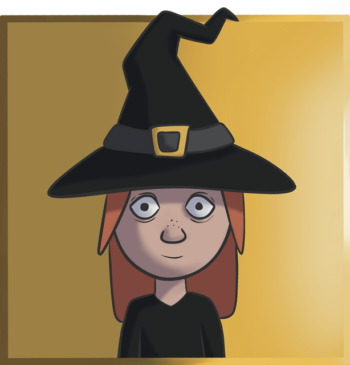Definition:
“Halloween,” celebrated on October 31st, is a holiday known for activities such as trick-or-treating, costume parties, carving pumpkins into jack-o’-lanterns, and visiting haunted attractions.
Etymology:
The term “Halloween” is a contraction of “All Hallows’ Eve,” referring to the evening before All Hallows’ Day (All Saints’ Day) on November 1st. “Hallow” is an old English word for “saint,” and “e’en” is a contraction of “evening.”
Description:
Halloween has roots in various ancient Celtic and Roman festivals, and was later influenced by Christian traditions.
The modern celebration of Halloween can be traced back to a Celtic festival called Samhain, celebrated on November 1st, which marked the end of summer and harvest, and the beginning of the dark season (winter). It was a time when the Celts believed that the boundary between the physical world and the spirit world became thinner, and spirits and ghosts could roam freely on Earth. People would light bonfires and wear costumes to ward off roaming spirits. With the spread of Christianity, Samhain merged with All Hallows’ Eve, leading to the modern Halloween.
Today, Halloween is celebrated with a variety of activities, including costumes, scary stories, horror movies, decorating houses and gardens with spooky symbols such as ghosts, witches, skeletons, and spiders, and especially “trick-or-treating,” where children go door to door asking for candy with the threat of playing a trick on the homeowner if they don’t receive any. Some of the most popular tricks being covering their house with eggs or toilet paper. It is also common to host Halloween parties, where guests dress up in scary costumes and participate in various games and competitions. Halloween-themed events, such as pumpkin festivals, haunted houses, corn mazes, and parades, are popular attractions.
Halloween is celebrated differently around the world:
- United States and Canada: Known for elaborate decorations, extensive trick-or-treating, and large-scale community events.
- Ireland and Scotland: The origins of Halloween, where Samhain was celebrated. Bonfires, traditional games, and divination rituals are common.
- Mexico: Halloween is followed by Día de los Muertos (Day of the Dead), a celebration honoring deceased loved ones with altars, food, and festivities.
- United Kingdom: Halloween celebrations include trick-or-treating and parties, though traditionally, Guy Fawkes Night on November 5th was more widely observed.
Symbolism:
Marking the end of the harvest season and the beginning of winter carries symbolism of SLM, and the celebration of it symbolizes herd mentality.
Articles:
Spiderweb
Definition: A “spiderweb” (or “cobweb”) are networks of thin threads of silk spun by spiders to capture prey. Etymology: The word “spiderweb” comes from the Old English “spider” and “web,”…
Witch’s Hat
Definition: A witch’s hat is a hat worn by a witch. It’s typically a tall pointed, cone-shaped black hat with a wide brim. Etymology: The term “witch” comes from the…
Wizard’s Hat
Definition: A wizard’s hat is a hat worn by a wizard. It’s typically a tall pointed, cone-shaped hat with a wide brim, adorned with stars, moons, or other mystical symbols….
Religion:
Halloween itself is not mentioned in major religious texts. However, its connection to All Hallows’ Eve ties it to Christian traditions. All Hallows’ Eve is part of the Christian liturgical year, leading into All Saints’ Day on November 1st and All Souls’ Day on November 2nd. These days commemorate saints and the faithful departed.

